Chrysler 2009 Annual Report Download - page 149
Download and view the complete annual report
Please find page 149 of the 2009 Chrysler annual report below. You can navigate through the pages in the report by either clicking on the pages listed below, or by using the keyword search tool below to find specific information within the annual report.-
 1
1 -
 2
2 -
 3
3 -
 4
4 -
 5
5 -
 6
6 -
 7
7 -
 8
8 -
 9
9 -
 10
10 -
 11
11 -
 12
12 -
 13
13 -
 14
14 -
 15
15 -
 16
16 -
 17
17 -
 18
18 -
 19
19 -
 20
20 -
 21
21 -
 22
22 -
 23
23 -
 24
24 -
 25
25 -
 26
26 -
 27
27 -
 28
28 -
 29
29 -
 30
30 -
 31
31 -
 32
32 -
 33
33 -
 34
34 -
 35
35 -
 36
36 -
 37
37 -
 38
38 -
 39
39 -
 40
40 -
 41
41 -
 42
42 -
 43
43 -
 44
44 -
 45
45 -
 46
46 -
 47
47 -
 48
48 -
 49
49 -
 50
50 -
 51
51 -
 52
52 -
 53
53 -
 54
54 -
 55
55 -
 56
56 -
 57
57 -
 58
58 -
 59
59 -
 60
60 -
 61
61 -
 62
62 -
 63
63 -
 64
64 -
 65
65 -
 66
66 -
 67
67 -
 68
68 -
 69
69 -
 70
70 -
 71
71 -
 72
72 -
 73
73 -
 74
74 -
 75
75 -
 76
76 -
 77
77 -
 78
78 -
 79
79 -
 80
80 -
 81
81 -
 82
82 -
 83
83 -
 84
84 -
 85
85 -
 86
86 -
 87
87 -
 88
88 -
 89
89 -
 90
90 -
 91
91 -
 92
92 -
 93
93 -
 94
94 -
 95
95 -
 96
96 -
 97
97 -
 98
98 -
 99
99 -
 100
100 -
 101
101 -
 102
102 -
 103
103 -
 104
104 -
 105
105 -
 106
106 -
 107
107 -
 108
108 -
 109
109 -
 110
110 -
 111
111 -
 112
112 -
 113
113 -
 114
114 -
 115
115 -
 116
116 -
 117
117 -
 118
118 -
 119
119 -
 120
120 -
 121
121 -
 122
122 -
 123
123 -
 124
124 -
 125
125 -
 126
126 -
 127
127 -
 128
128 -
 129
129 -
 130
130 -
 131
131 -
 132
132 -
 133
133 -
 134
134 -
 135
135 -
 136
136 -
 137
137 -
 138
138 -
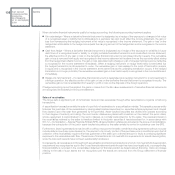 139
139 -
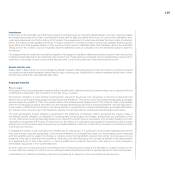 140
140 -
 141
141 -
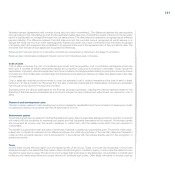 142
142 -
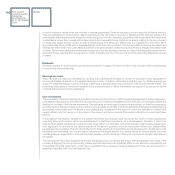 143
143 -
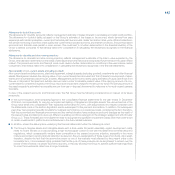 144
144 -
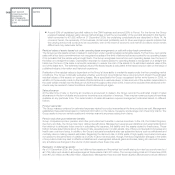 145
145 -
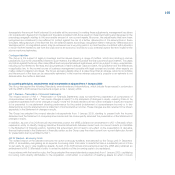 146
146 -
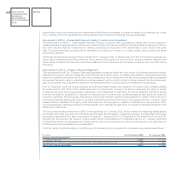 147
147 -
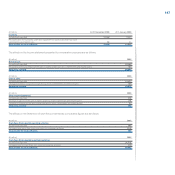 148
148 -
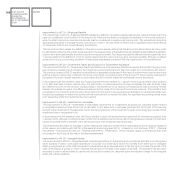 149
149 -
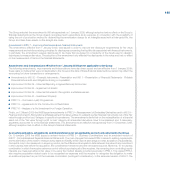 150
150 -
 151
151 -
 152
152 -
 153
153 -
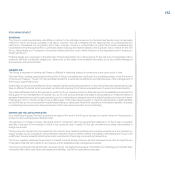 154
154 -
 155
155 -
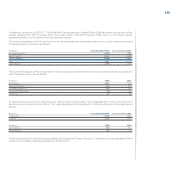 156
156 -
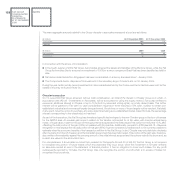 157
157 -
 158
158 -
 159
159 -
 160
160 -
 161
161 -
 162
162 -
 163
163 -
 164
164 -
 165
165 -
 166
166 -
 167
167 -
 168
168 -
 169
169 -
 170
170 -
 171
171 -
 172
172 -
 173
173 -
 174
174 -
 175
175 -
 176
176 -
 177
177 -
 178
178 -
 179
179 -
 180
180 -
 181
181 -
 182
182 -
 183
183 -
 184
184 -
 185
185 -
 186
186 -
 187
187 -
 188
188 -
 189
189 -
 190
190 -
 191
191 -
 192
192 -
 193
193 -
 194
194 -
 195
195 -
 196
196 -
 197
197 -
 198
198 -
 199
199 -
 200
200 -
 201
201 -
 202
202 -
 203
203 -
 204
204 -
 205
205 -
 206
206 -
 207
207 -
 208
208 -
 209
209 -
 210
210 -
 211
211 -
 212
212 -
 213
213 -
 214
214 -
 215
215 -
 216
216 -
 217
217 -
 218
218 -
 219
219 -
 220
220 -
 221
221 -
 222
222 -
 223
223 -
 224
224 -
 225
225 -
 226
226 -
 227
227 -
 228
228 -
 229
229 -
 230
230 -
 231
231 -
 232
232 -
 233
233 -
 234
234 -
 235
235 -
 236
236 -
 237
237 -
 238
238 -
 239
239 -
 240
240 -
 241
241 -
 242
242 -
 243
243 -
 244
244 -
 245
245 -
 246
246 -
 247
247 -
 248
248 -
 249
249 -
 250
250 -
 251
251 -
 252
252 -
 253
253 -
 254
254 -
 255
255 -
 256
256 -
 257
257 -
 258
258 -
 259
259 -
 260
260 -
 261
261 -
 262
262 -
 263
263 -
 264
264 -
 265
265 -
 266
266 -
 267
267 -
 268
268 -
 269
269 -
 270
270 -
 271
271 -
 272
272 -
 273
273 -
 274
274 -
 275
275 -
 276
276 -
 277
277 -
 278
278 -
 279
279 -
 280
280 -
 281
281 -
 282
282 -
 283
283 -
 284
284 -
 285
285 -
 286
286 -
 287
287 -
 288
288 -
 289
289 -
 290
290 -
 291
291 -
 292
292 -
 293
293 -
 294
294 -
 295
295 -
 296
296 -
 297
297 -
 298
298 -
 299
299 -
 300
300 -
 301
301 -
 302
302 -
 303
303 -
 304
304 -
 305
305 -
 306
306 -
 307
307 -
 308
308 -
 309
309 -
 310
310 -
 311
311 -
 312
312 -
 313
313 -
 314
314 -
 315
315 -
 316
316 -
 317
317 -
 318
318 -
 319
319 -
 320
320 -
 321
321 -
 322
322 -
 323
323 -
 324
324 -
 325
325 -
 326
326 -
 327
327 -
 328
328 -
 329
329 -
 330
330 -
 331
331 -
 332
332 -
 333
333 -
 334
334 -
 335
335 -
 336
336 -
 337
337 -
 338
338 -
 339
339 -
 340
340 -
 341
341 -
 342
342 -
 343
343 -
 344
344 -
 345
345 -
 346
346 -
 347
347 -
 348
348 -
 349
349 -
 350
350 -
 351
351 -
 352
352 -
 353
353 -
 354
354 -
 355
355 -
 356
356 -
 357
357 -
 358
358 -
 359
359 -
 360
360 -
 361
361 -
 362
362 -
 363
363 -
 364
364 -
 365
365 -
 366
366 -
 367
367 -
 368
368 -
 369
369 -
 370
370 -
 371
371 -
 372
372 -
 373
373 -
 374
374
 |
 |

148 FIAT GROUP
CONSOLIDATED
FINANCIAL
STATEMENTS
AT 31 DECEMBER
2009
NOTES
Improvement to IAS 19 – Employee Benefits
The improvement to IAS 19 – Employee Benefits clarifies the definition of positive/negative past service costs and states that in the
case of a curtailment, only the effect of the reduction for future service shall be recognised immediately in the income statement,
while the effect arising from past service periods shall be considered a negative past service cost. This amendment should be
adopted prospectively to changes to plans occurring on or after 1 January 2009, but there was no significant accounting effect at
31 December 2009 for the Group following the adoption.
The improvement also revises the definition of the return on plan assets, stating that this amount should be stated net of any costs
for administering the plan (other than those included in the measurement of the defined benefit obligation) and clarifies the definition
of short-term employee benefits and other long-term employee benefits. The Group adopted this amendment retrospectively from
1 January 2009 for the definitions of return on plan assets and short-term and long-term employee benefits, although no effects
arose as the Group’s accounting treatment of these items was already consistent with the requirements of the amendment.
Improvement to IAS 20 – Government Grants and Disclosure of Government Assistance
The improvement to IAS 20 – Government Grants and Disclosure of Government Assistance requires the benefit of a government
loan at a below-market rate of interest to be treated as a government grant and then accounted for in accordance with IAS 20.
The previous version of IAS 20 required no benefits to be separately recognised in the case of a government loan received as a
grant at a below-market rate of interest; the Group accordingly recognised loans at the amount of the proceeds received and
recognised the lower interest expense on such loans directly in income statement as financial income (expenses).
In accordance with the transition rules, the Group adopted the improvement on 1 January 2009 to government loans obtained
on or after that date at below-market rates. For such loans, on disbursement the Group recognises the loan at its fair value
and deferred income for the amount corresponding to the benefit yet to be received of obtaining the loan at a below-market
interest rate (namely the grant, the difference between the fair value of the loan and the amount received). This benefit is then
recognised in income when and only when all conditions for the grant to be recognised are satisfied, on a systematic basis over
the periods necessary to match the income with the costs which it is intended to offset. No significant accounting effects arose
at 31 December 2009 from adopting the improvement.
Improvement to IAS 28 – Investments in Associates
The improvement to IAS 28 – Investments in Associates requires that for investments accounted for using the equity method
a recognised impairment loss should not be allocated to any asset (and in particular goodwill) that forms part of the carrying
amount of the investment in the associate, but to the carrying amount of the investment overall. Accordingly any reversal of that
impairment loss is recognised in full.
In accordance with the transition rules, the Group elected to apply the amendment prospectively to reversals recognised from
1 January 2009, although no effects arose in 2009 from its adoption as the Group did not recognise any reversal of impairment
losses on goodwill that formed part of the carrying amount of an investment during the year.
This amendment also leads to changes in certain disclosures relating to investments in associates and joint ventures measured
at fair value in accordance with IAS 39, at the same time amending also IAS 31 - Interests in Joint Ventures, IFRS 7 - Financial
Instruments - Disclosures and IAS 32 - Financial Instruments - Presentation. These changes regard circumstances that were
not present in the Group at the date of this financial statement.
Improvement to IAS 38 – Intangible Assets
The improvement to IAS 38 – Intangible Assets requires expenditure on advertising and promotional activities to be recognised
as an expense. Further, in the case expenditure is incurred to provide future economic benefits to an entity but no intangible
asset is recognised, an entity shall recognise the expenditure as an expense when it has the right to access the goods in the
case of the supply of goods or when it receives the services in the case of the supply of services. The standard has also been
amended in order to allow entities to use the unit of production method for determining the amortisation charge for an intangible
asset with a finite useful life.
